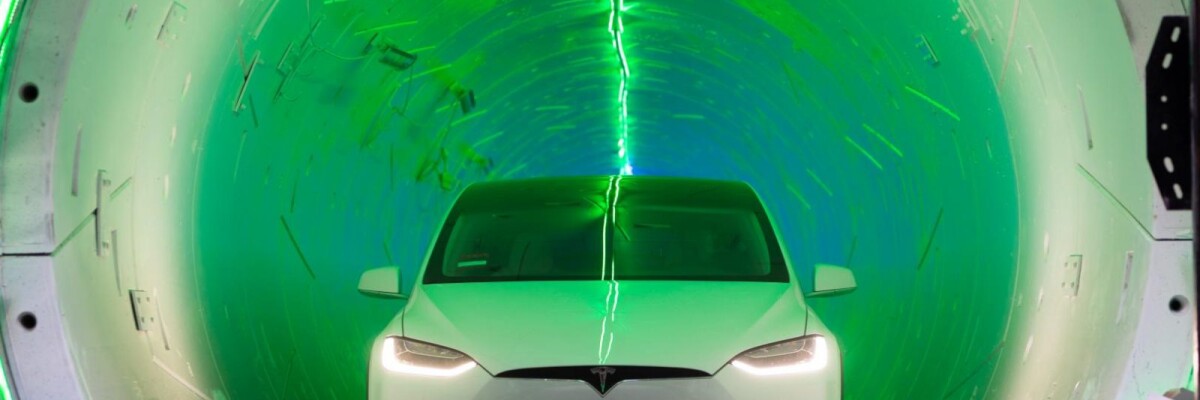The system still operates in the test mode and can be tried out by invitation only\n
Founded by Elon Musk in 2016, The Boring Company is developing two types of underground transportation networks: Hyperloop system intended for vacuum trains, and Loop tunnels, where electric cars can travel at the speed of up to 240 km/h.
On December 18, the company launched the first 1.83 km long section of the Loop network. The tunnel is located beneath the city of Hawthorne near Los Angeles
According to the Loop system’s initial designs, electric vehicles were to be placed on a skate. However, the engineers found the solution too cumbersome and in the working prototype of this innovative transportation system the cars are equipped with retractable wheels that stabilize and guide them through the tunnel. So far, the tests are done using modified autonomous Tesla electric cars. Cars by any other manufacturers equipped with stabilizers would also be able to use the tunnel.
Electric vehicles can access the tunnel through special platforms that operate as elevators located at entrance and exit points of the tunnel.
Speaking at the tunnel presentation ceremony, Elon Musk said that if a car does not have an autopilot system, would not be an obstacle to it using the tunnel, and those who do not have an electric car will always be able to rent one.
So far, the new transport system can be tested by special invitation only. Among the first people to take a ride through the tunnel were Ars Technica journalists, who noted a few unpleasant things about using the system’s test version.
In particular, the electric car is operated by a human driver rather than the autopilot system. The maximum speed gathered does not go above 70 km/h with the car bumping quite badly against the tunnel walls at the turns.
When presenting the new tunnel, The Boring Company announced some of its plans. In particular, it is going to increase tunnel drilling speed 15 times by installing tunnel concrete reinforcements simultaneously to the operation of the boring machine.
In addition to transportation systems, the company will also focus on making tunnels for utility lines including water and power supply networks.
The company’s next big project is a 56 km long tunnel system that will connect Washington and Baltimore.
Share this with your friends!






Be the first to comment
Please log in to comment